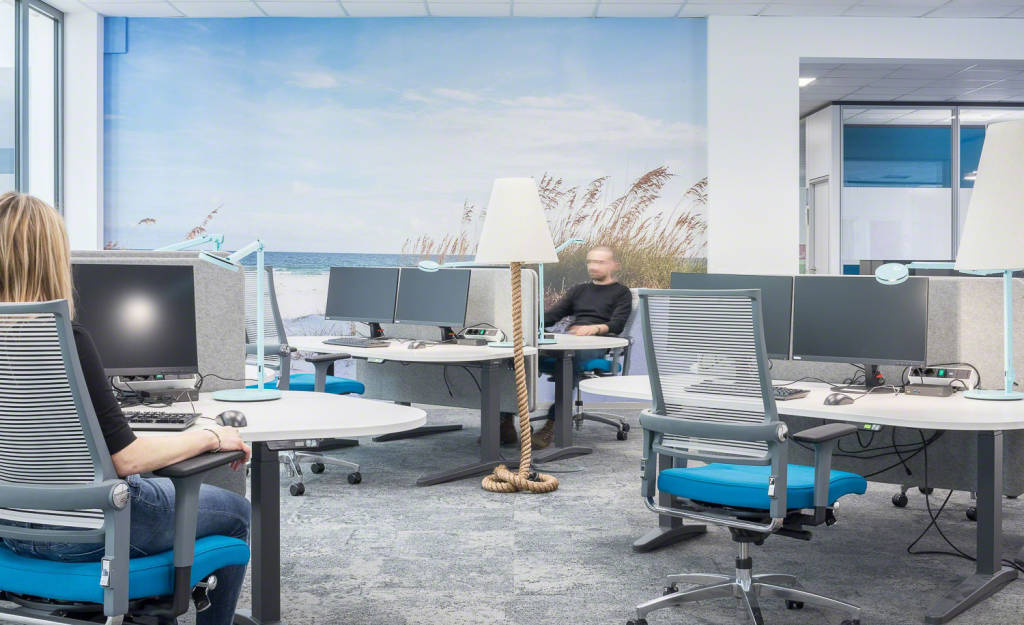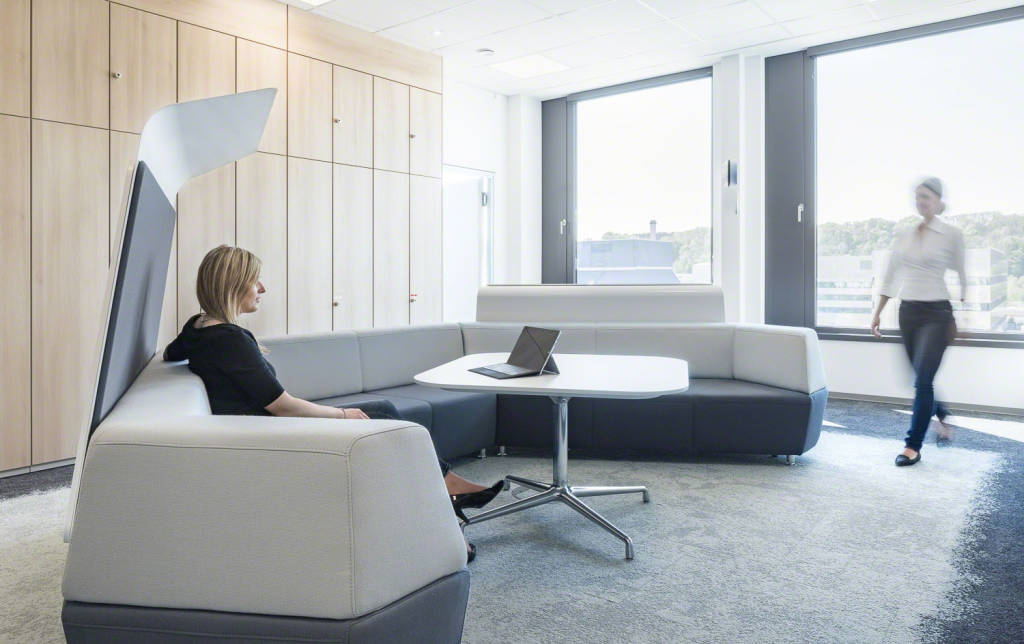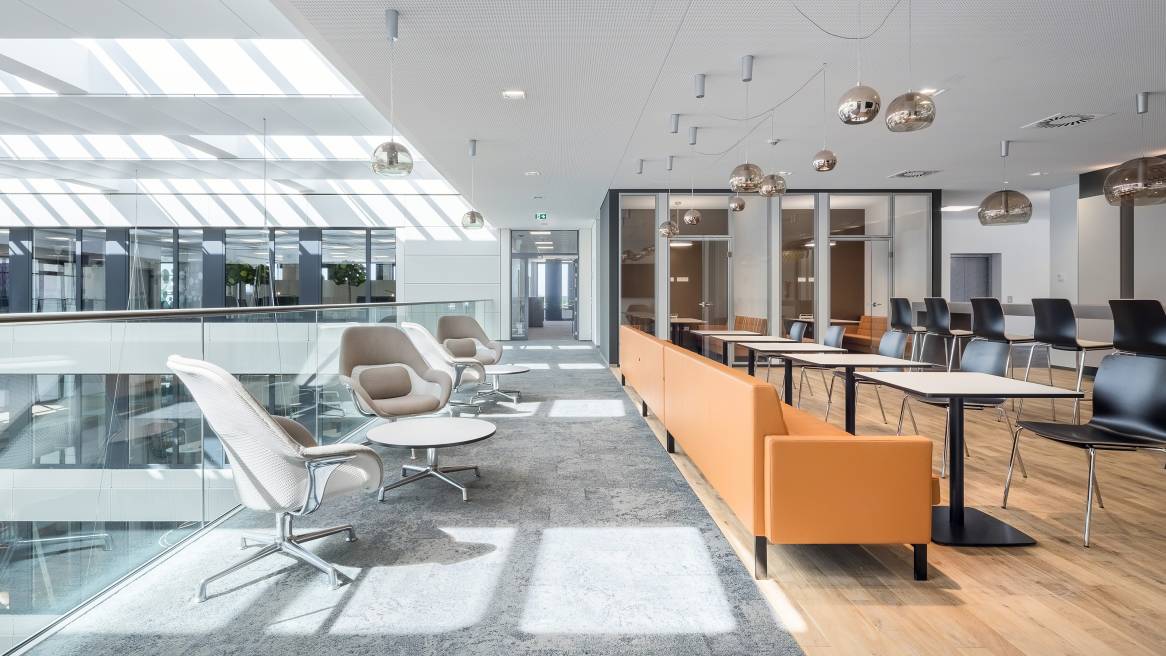Wellbeing Through Workplace Design
Initiatives like employee assistance programs need to be a part of a broader wellbeing strategy
Can the workplace be a place where people leave healthier than when they arrive?
That’s a question that competitive employers are asking more than ever before — and for good reason. The challenges of supporting employees’ wellbeing, and the risks of not doing so, are escalating.
Workplace stress has soared, taking a toll on productivity, absences, turnover and cost. As many as two-thirds of full-time workers are experiencing burnout at work, according to Gallup research. In fact the World Health Organization classified burnout as a major workplace issue “resulting from chronic workplace stress that has not been successfully managed.”
At the same time, the job market globally is tighter than it’s been in decades, so employees know they can be much more discriminating about the company they choose to be part of. That’s especially true for millennials, now the largest generation in the workforce.

They’re reinventing conventional ideas about what employers are expected to provide, and they’re much less loyal. In fact, according to a 2018 Deloitte study of workers in 36 countries, 43% of millennials envision leaving their jobs within two years for a better workplace experience.
No wonder so many employers are ready to radically change their approach to wellbeing, scrutinizing everything from benefits to services to perks to the design of their workplaces. They’re frustrated by the limited success of wellbeing initiatives such as employee assistance programs. And yet, many are also uncertain about what to try next.
A Culture of Wellbeing
For global pharmaceutical giant Boehringer Ingelheim, being a great place to work is integral to its over 130-year history of growth and success as a family-owned company. Today, with more than 50,000 employees in more than 180 locations throughout Europe, the Americas and Asia, the company still focuses on meeting employees’ needs within a culture that strives to be both progressive and caring.
“It’s important to be a place where people can be creative and innovative,” says Hagen Mörbel, who recently managed a project that resulted in an innovative new facility for the company in Biberach, Germany.“When people are happy about where they work, it’s easier to handle the daily demands.”
Opened in 2018 as the company’s largest research and development facility worldwide, it was carefully planned and designed to be an agile workplace where teamwork and innovation can thrive. Achieving this required upending the German tradition of assigned private offices in favor of an open-plan, shared environment that Mörbel describes as “smart design.”
A User-Centered Design
A large portion of its smartness can be attributed to the fact that employees had input into how the space was designed. As much as colleagues wanted to collaborate more easily in teams, they also needed some quiet corners and shielded places where they couldn’t see and be seen by everyone else.
“Work is getting harder and more complex. It requires more of people. But this space gives the energy back.”
Hagen MörbelProject Manager
According to Mörbel, in general, Europeans tend to be less comfortable with big open spaces and large groups compared to North Americans, and this cultural insight influenced the decision to alter the widely-adopted tradition of large expanses of open plan and instead create zones in the new Bieberach facility that are limited to 12-40 people.
The planners also realized that people aren’t easily inspired by bland, cookie-cutter spaces. Providing ways to personally identify with their organization and feel a sense of belonging would be especially important for the 800 people who would be moving out of their private offices to work in the new facility. With that in mind, the new residents were asked to help decorate the interior by selecting large photomurals of nearby places for the walls.

“No one is looking at the Maldives or Costa Rica or somewhere else far away,” explains Mörbel. “We’re looking at scenes that we know. It’s a very easy way to help people identify with this as their workplace.”
As attractive as the new facility is, Mörbel says its primary value goes far beyond appearances: “It’s an activator of energy. Work is getting harder and more complex. It requires more of people. But this space gives the energy back.”
Wellbeing at work can flourish when organizations shift their emphasis and resources away from strategies focused primarily on lowering healthcare costs and improving productivity. Instead of only being preoccupied with a financial return on their investments in employee wellbeing, a growing number of organizations are becoming intentional about creating more value by taking better care of their employees.
The reward of such efforts are loyal, engaged employees who feel a strong personal connection to their organizations.


